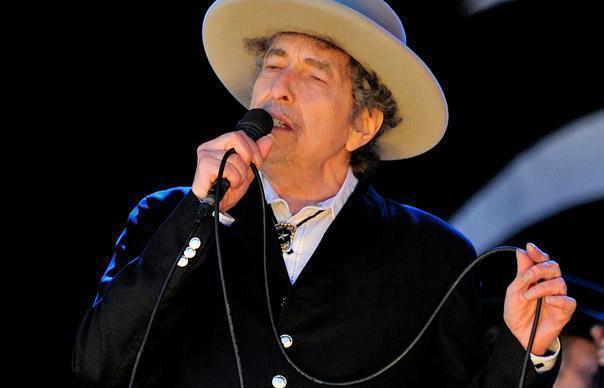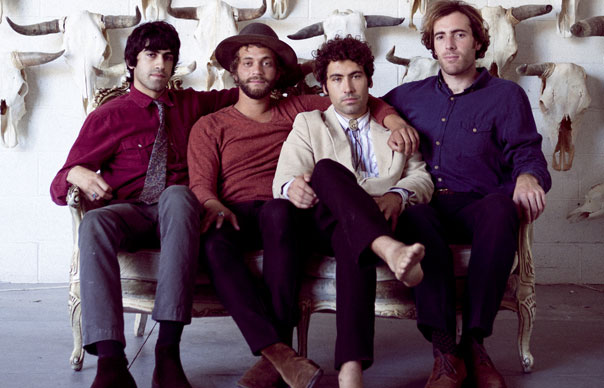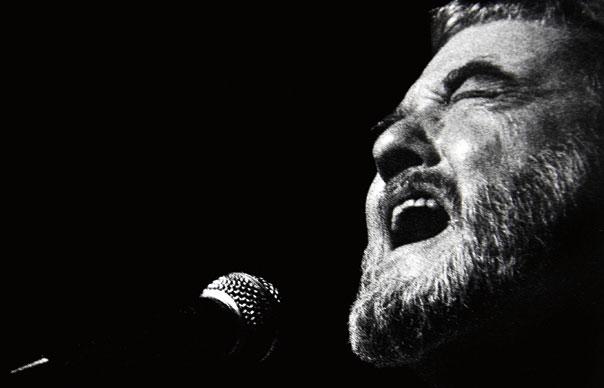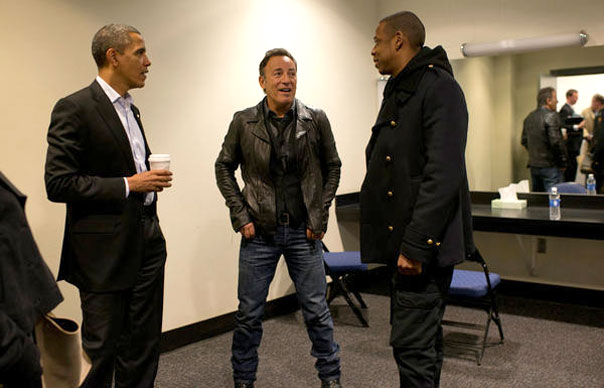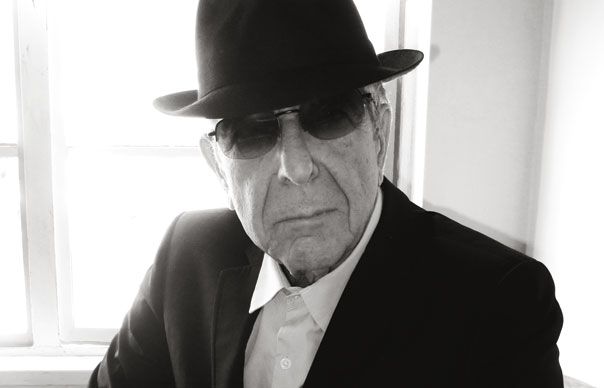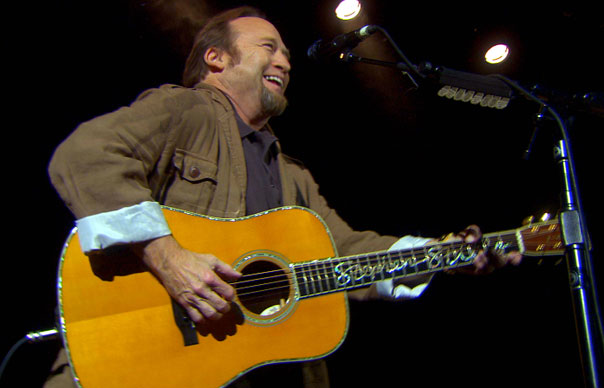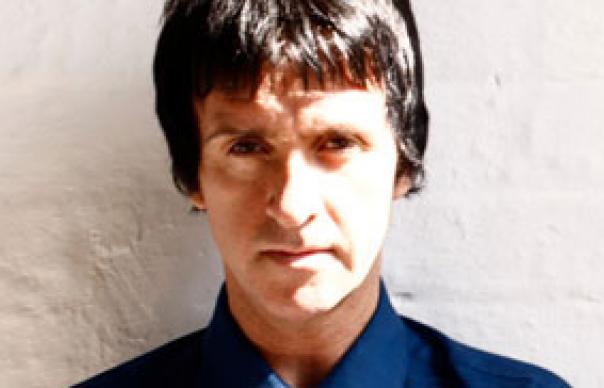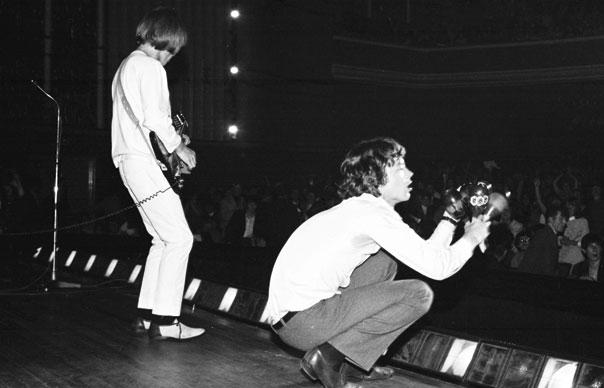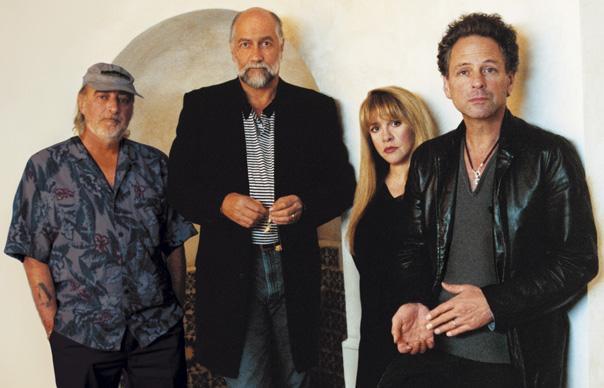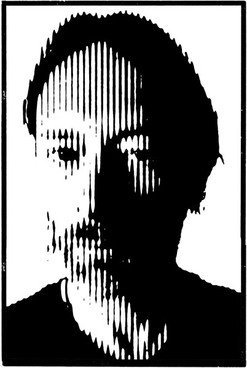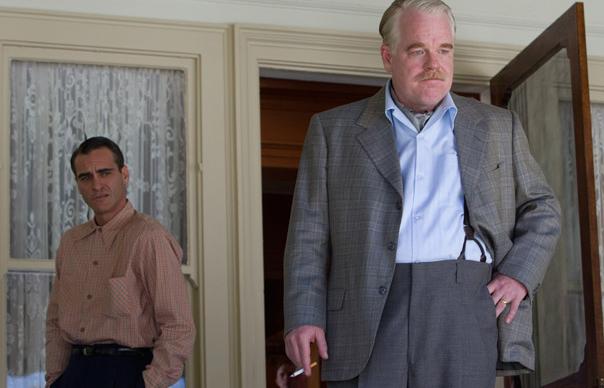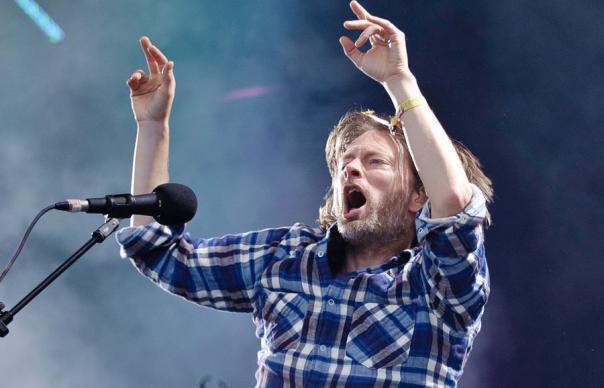Eno’s sublime new album, Lux, is reviewed in the current issue of Uncut (December 2012, Take 187) – so we’re delving back to December 2010’s issue to meet the time-travelling conceptualist himself, a man who’s into ecstatic food cults, Music For Maternity Wards – and trying to remember his own past. “One of the big driving forces for Roxy Music,” he says, “was that we hated hippies…” Words: Stephen Troussé
_______________________
Walk down a gentrified West London side street, turn into a slightly twee mews of old artisan cottages and find an unassuming front door. The doorbell isn’t working so you have to knock. You’re escorted into a room that seems impossibly, vastly larger on the inside than it seemed from the outside. West African music is booming from an impressive sound system. Mirrorballs hang from the ceiling, the room seems to be carpeted with astroturf, and a spiral staircase leads up to a second floor which could well house a gallery, absinthe bar or holodeck. In a library area, full of books about chaos theory, modern architecture and pragmatist philosophy, a scholarly figure, some dandyish don wearing a mauve velvet jacket with elbow patches, is hard at work.
Here is Brian Eno, glam philosopher, cybernetic crooner, generative conceptualist, and this is his studio, his TARDIS, the craft he’s piloted through time and space, in one form or another, since 1971 when he first operated a Revox tape machine for the nascent Roxy Music. Or 1973, when he first invited Robert Fripp round to help conceive ambient music on (No Pussyfooting). Or maybe even since that afternoon in his 1950s Suffolk childhood when an uncle first showed him a slide projector, and he became besotted with luminous windows into other worlds…
He’s here to tell us about his new record, his first for Warp, an album of imaginary soundtracks and cosmic soundscapes – the kind of music, sounding like a modern-day collaboration between the BBC Radiophonic Workshop, Neu! and the Aphex Twin, that would provide a much better soundtrack for a 21st Century Timelord than the current dismal bluster…
Now in his sixties, he’s still possessed by the purpose and prophecy of music, how conceptual gestures might remap worlds. Indeed he’s seen strands of his thought become part of the fabric of the modern life.
“It’s great when something takes on a life that not only did you not suspect but you didn’t even know about,” he grins. “It’s like when I discovered that my music was used in a lot of maternity wards in England. I occasionally meet people and they say, ‘Oh, I was born to Discreet Music.’” A perfectly judged pause. “They always have very weird eyes, those people…”
_______________________
UNCUT: A question you famously ask musicians you work with: what is your new record for?
ENO: That’s a good question! To me the most interesting question in the world really is “What is art for?” In the sense of why do we do it, why do we like it? So that’s kind of a local version of that question. I’ll talk about film music, which I’ve always used as a kind of code for “unfinished music”. You know, the thing about film music is that it’s music without the central element there. It’s supposed to be the wrapping around an experience, but the experience isn’t there if you’re just listening to the music. When I first started listening to film music in the early ’70s, it was a complete revelation to me, that you could have a music that was deliberately incomplete, and what that did to a listener was to call upon them to complete it in some way.
Quite a lot of the music I’d been involved with at that time seemed similarly incomplete. The music was very much based around a concept. And if you weren’t aware of what the concept was, then the music didn’t mean a whole lot. This was particularly true of late ’60s music like The Scratch Orchestra, which I belonged to, and Portsmouth Symphonia. If you didn’t know what the Portsmouth Symphonia was, how it was comprised, then the music would strike you as completely ludicrously out of tune, senseless! More and more I was becoming familiar with music that deliberately left a hole, was built around a vacuum of some kind.
With this album, what I think I’m saying is: here’s an invitation to imagine some particular worlds. Here’s the music that surrounds those worlds. Now imagine that world. And I think that’s what a lot of music is doing really. Even songs which seem to be about something… “Da Doo Ron Ron”: it seems to be something to do with a girl meeting a boy. In fact, that’s really just the surface foam. What it’s really about is a feeling – I dunno, joie de vivre, excitement or thrill! All the things that young people like!
How has your conception of music changed since the mid ’70s? In a sense, all music has become ambient now…
It’s quite true! If you have ideas that are adopted by a lot of other people then you cease to look original, actually. The same thing happened to Beckett, his writing style was so revolutionary. Or a better example might be John Osborne who really pioneered a way of writing and a type of subject to write about, that people hadn’t really thought about before. But it’s a very attractive idea, and everyone thought, that’s really good – I’ll do that as well.
But it’s not necessarily ambient music people are listening to. All kinds of music are now an accompaniment to your day – when you’re driving, commuting…
I find that rather spooky. It’s the end of a certain type of process. From music being an entirely communal activity. Recording completely changed that – I call it the materialisation of music. But what’s happened since then is what you might call the liquidation of music, where it’s suddenly stopped being just physical, it’s become entirely pervasive and liquid. And it’s interesting to see what effect that has on composers. I don’t yet know if anyone’s come up with the response to the liquidation – the liquidisation – of music.
Having worked on actual soundtracks, including Peter Jackson’s The Lovely Bones [2009] does that affect what you want to do with imaginary soundtracks?
In fact there’s quite a connection between Lovely Bones and this record, because some of the stuff on here was proposed for the film and was either used in a different form or wasn’t used at all. The experience of working on a film, I have to say, is never as enjoyable as imagining a film you’d like to make music for. It’s much better as an abstract activity. I’m never asked to do the right films. I’m always asked to do these big-budget films. What my music would naturally suit is low-budget, obscure arthouse films that hardly anyone gets to see.
Nino Rota is a soundtrack composer you’ve mentioned. Are there others?
Ennio Morricone is a great one. I love his stuff. All the Clint Eastwood series. Again there’s a sort of minimalism about both composers. Nino Rota’s Juliet Of The Spirits has two tunes in it, and they keep reappearing in different guises. That’s very economical. Because you, as a listener, start to register slight differences in the way that tune reappears. Slightly more vague, sometimes more strident, triumphant, then sad… You can make very subtle shades if the basic core of the music is the same.
At which point did the new album become a Warp record? Was it finished and then you found a home for it?
It was mostly finished. It always helps for someone to say, actually we’re going to release this, and to give you a date. Because otherwise you never finish anything! I have an archive of several thousands of pieces of music that have never been released. I suppose I’ve released three or four per cent of the music I’ve made. And I won’t release something until someone says here’s the date it’s got to be delivered.
Do you ever listen to your old stuff for fun? Or is the process the important part and then you can forget about it?
I don’t listen to that much. If I want to hear something I normally want to sing along, in which case I put gospel songs on. Or I want to dance, in which case I put West African music on. The only record of mine I listen to with any regularity is On Land. Which I still find very interesting, because I don’t really know how I made it. I can’t remember how I made it. I can’t actually remember the decision process within it.
Is that true of all your old music in a sense? It’s so long ago, it feels like someone else made it?
Especially in terms of lyrics I get that feeling. When I listen to the lyrics of my early records I think sometimes – that’s really brilliant! Or sometimes I think – that’s really dumb! I have a range of opinions about them. But I can’t put myself back into the mind of the person who wrote them. I can’t remember writing them. I know I did because I’ve still got my notebooks where they’re written down. I can’t remember ever thinking about them. Whereas, with the music I think, oh yes, that’s how it started, and then, oh yes, I did that. And then I made a little breakthrough there. I can generally piece together the history of a piece of a music. But the lyrics, it’s as if they were messages that were posted into my brain. And I just copied them out.
Any lines in particular?
Most of them! I just don’t know where they came from. It was like automatic writing, I just copied them out. It’s a mystery! I don’t know who did them. Whoever it was, I never paid him royalties!
Has titling music become more important as the other elements of music – sleeve art, videos and so on – have been stripped away?
Titles have always been a very big thing for me. Especially with instrumental music. The only lyric is the title, and that’s the only thing that gives a hint to the listener about where they might start thinking, where they might start going. So I have to say, I think Music For Airports was an absolutely brilliant title! I could have called that record anything. But that title in its day was sort of surprising. Because it made people think that music was for something these days.
I remember one of the early reviews saying: no beat, no rhythm, no melody. As a criticism. And I thought: I’m quite proud of that! I’ve managed to leave out nearly everything!
You’ve tried to rationalise various aspect of making music – through lyric generators, modular composition and so on. But one of the distinguishing features of a lot of your records is melody – is it possible to rationalise this element of music?
I agree, that’s a problem area. In fact there are a lot of problem areas like that. Why are we interested in one melody over another, which to a Martian might be imperceptibly different? I think this is to do with the way we apprehend artworks in general. I think when you hear something new, or hear something you haven’t heard before, what you’re really doing is listening to the whole of your musical history up to that point. It’s like the latest phrase in the conversation. Some artwork does that to an extreme, it’s like the punchline to a joke. If you don’t know the rest of the joke it won’t make any sense at all.
Pop music knows that it’s contingent. You know that context is constantly flowing round it and things make sense… “Itsy Bitsy Teeny Weeny Yellow Polka Dot Bikini” made sense right then and there. And probably never again! This is one of the big advances that pop culture has made. It fundamentally understands that the time that something is set in is part of the work. You can’t separate the thing from the time. It successfully weaves itself into the time, and it then becomes part of the context for other work to be dropped into.
For your Pure Scenius performance at the Brighton Festival, with The Necks and Karl [Hyde] from Underworld, you imagined you were ethnomusicologists of the future, reconstructing music of the past. How is reconstructing a future music easier than simply imagining a future music?
I needed a conceit whereby everything we needed to construct had disappeared. So we couldn’t play it perfectly. What we were doing was sort of hypothetical. What I wanted was to create a frame of mind from which one would be playing. I’ve done this experiment quite a lot. I used to do it working with Bowie sometimes. I would give the players characters. I would say – you’re a drummer, it’s 2025, you’re playing in a nightclub on the outskirts of Tripoli which is now a very large pharmaceutical capital. And I tried to describe the kind of personality you would be, the kind of music you’d want to play. And then we would improvise, and you would improvise in character as it were. A bit like theatre groups do, actually, when they generate scripts by improvisation. And that sometimes led to very, very different things that nobody would ever have played otherwise. The biggest problem with group improvisation is that nobody bloody well stops! So I had to think of other ways of sculpting it somehow or allowing it to sculpt itself. So I had a lot of techniques. One of them was the words SHUT UP. I had an overhead projector onstage, and everybody on stage had a screen, so I could slip notes underneath, some of which said quite mysterious things: IKEBANA NOISE CLUB, or WARM LIKE BLOOD. PLAY AT THE EXTREMES. And some of them were quite conceptual. They would say things like SLOWLY MORE DISTURBED. When people came into the auditorium, they were given a badly printed piece of paper, explaining the seminar. I loved writing it, making up the titles: ECSTATIC FOOD CULTS? Well, that’s where we are now really, with Heston Blumenthal and so on.
Have you seen that online supermarkets now have a section for Ambient Food?
I’ve heard about this!
Sadly, it’s just food that can be stored at room temperature. Like Pot Noodle.
Oh, and I was thinking – background food, what does that mean?!
Now in your sixties, do you still feel subversive or radical? When you were asked to produced Coldplay, at a perilous time for EMI, were you seen as a safe pair of hands?
EMI were not very pleased that I was going to be the Coldplay producer – though I don’t think they did anything actively to stop it happening! I think they would have preferred a safer pair of hands. I don’t know… I haven’t ever tried to be a rebel for its own sake. At art school it came about because what I was interested in wasn’t what the school was interested in. It was very much a painting school. And I was interested in happenings and performance and music, as well as visual arts. They just thought I was one of those people who couldn’t focus properly. Which actually is true, as it turns out!
Is that lack of something to kick against a problem for you?
I can remember that one of the big driving forces for Roxy Music was that we hated hippies. We didn’t want to be like that! In fact, punk was the same way. One of the big driving forces for punk was that they hated us! They had something very strongly that they wanted to draw an alternative to. And certainly when I was at art college I hated everything! Everything to do with painting, except for very few painters, I couldn’t bear. So one of the ways you find yourself is to find what space to you is left. You’ve cancelled everything else out as being ideologically corrupt or for whatever reason not possible. And there’s a little hole left.


